InsureandGo first to offer a tailored cruise travel insurance policy to the Australian online marketplace
Australia is now the world’s fastest-growing cruise market
Sydney, 30 July 2014 – Global online travel insurance provider, InsureandGo has launched a new cruise travel insurance policy to the Australian online marketplace to meet growing demand from Australian travellers who have recently become the world’s fastest growing cruise market.
InsureandGo’s General Manager Sebastien Kaisin said InsureandGo was delighted to offer a cruise travel insurance policy at a time when cruise holidays are at an all-time high and are more popular in Australia than in any other part of the world.
A recent report from the Cruise Lines International Association (CLIA) showed that more than 830,000 Australians took a cruise last year, an increase of 20 percent from the previous year (more than double the growth rate of any other major cruise market) meaning that Australia now tops the world for market growth and penetration of cruising holidays.
“InsureandGo strives to provide innovative and comprehensive travel insurance products that are tailored to the shifting needs of Australian travellers. No one else in the Australian online travel insurance marketplace is offering such a customised cruise insurance policy which demonstrates our commitment to listening to what our customers are looking for and developing our products to meet their needs,” Mr Kaisin said.
InsureandGo’s new cruise policy has been created to provide exceptional cover for cruise related incidents that are not covered to such an extent through traditional single-trip or multi-trip travel insurance policies.
Key benefits of InsureandGo’s new cruise policy include:
- Missed cruise departure cover from $5,000 to $50,000 to cover additional expenses if you miss your cruise.
- Missed port cover, economic compensation for not being able to visit a scheduled port due to weather or mechanical breakdown.
- Delays, loss, theft and damage to your luggage and belongings including cover while in Australia up to 72 hours before your cruise departure
- Unlimited cover for Medical Expenses on board and onshore (Except for expenses incurred in Australia – onshore)
- Reimbursements for shore excursions
- Cabin confinement – if you are confined to your cabin for medical reasons by a ship medical officer, InsureandGo will pay $75 for every 24 hours a passenger is confined
- Cruise delays, where a passenger’s commencing or returning international journey is delayed
- Emergency Medical Transportation to cover a passenger if they require urgent transportation to a medical facility or need to return home for emergency treatment.
“Before this policy was launched, passengers would have taken the usual ‘comprehensive’ or ‘basic’ insurance policy but most of the above specific items which relate to cruise travel were not included,” Mr Kaisin said.
Aside from the cruise-specific features of InsureandGo’s new cruise travel insurance policy, customers also benefit from all the usual advantages of booking travel insurance with InsureandGo such as the security of booking with a global brand that covers millions of travellers per year, 24 hour emergency assistance and a quick and easy claims process.
“Cruise enthusiasts can now rest assured they are covered should the unexpected arise during their voyage at sea” Mr Kaisin said.
The Cruise Lines International Association’s (CLIA) 2014 report showed that Australians spent an estimated 8.7 million days at sea in 2013, up 22 per cent on 2012, with the number taking a trip of between eight and 14 days rising almost 35%.
Australians account for 40 per cent of those cruising within the South Pacific region, and the Mediterranean is Australia’s favourite long-haul destination to go cruising.
The number of Australians cruising to New Zealand has almost reached 100,000 according to the CLIA 2014 report.
Customers can also opt for policies which incorporate both international and domestic destinations depending on their itinerary.
InsureandGo dominates the CANSTAR awards winning both the top travel insurance accolades
InsureandGo receives:
- ‘Outstanding Value for International Travel Insurance’
- ‘Outstanding Value for Domestic Travel Insurance’
Sydney, 04 September 2014 – Online travel insurance provider, InsureandGo has cemented its position as one of Australia’s leading travel insurance providers, achieving the two top accolades in independent reviewer, CANSTAR’s annual travel Insurance report.
InsureandGo has beaten some of the country’s largest insurance providers to achieve the highly coveted ‘Outstanding Value in the International Travel Insurance Award’ as well as winning the ‘Outstanding Value in the Domestic Travel Award’, for the second year running.
InsureandGo was announced as one of the national winners in both of the top categories in CANSTAR’s comparison of 65 travel insurance brands and 208 domestic and international policies in Australia. The outstanding value awards are presented to the insurers that provide a mix of competitive premiums and impressive benefits across a range of travel destinations and coverable events.
InsureandGo General Manager, Sebastian Kaisin said that InsureandGo Australia was delighted to have been recognised as national leaders.
“When we entered the Australian marketplace in 2010 our objective was to provide Australian travelers with travel insurance cover that was both comprehensive and affordable,” Mr Kaisin said.
“In the short time that we have been operating within Australia, we have achieved three CANSTAR awards which is a significant validation of InsureandGo’s strong offering.
“Being backed by one of the world’s largest insurance company’s guarantees that our policies are exceptionally comprehensive whereas operating predominantly in the online space provides us with a cost advantage, allowing us to pass significant savings on to our customers. We feel it is this winning combination that sets us aside from our competitors and has enabled us to reach the top of the CANSTAR award charts for another year.”
The CANSTAR Travel Insurance Star Ratings report provides an impartial and transparent analysis of insurance products where CANSTAR’s expert team collect, analyse and research hundreds of policies to determine the best products in each category.
Policies are judged against three common traveller profiles: a single person, a couple (based on two adults who travel together); and a family consisting of two adults and their two children.
CANSTAR, Research Manager, Mitchell Watson congratulated InsureandGo on the outstanding achievement of winning both of this year’s top accolades – the CANSTAR Outstanding Value Domestic Travel Insurance Award and the CANSTAR Outstanding Value International Travel Insurance Award.
“It really is an impressive achievement to win both of the CANSTAR Outstanding Value Awards in a single year. InsureandGo were successful across both top categories thanks to their mix of competitive premium and impressive features.” Mr Watson said.
“A new entrant into the report last year, InsureandGo stormed up the charts to be a 2013 Outstanding Value Travel Insurance Award winner and has strengthened its position this year by repeating its domestic success for a second year running as well as taking the top international spot.”
“Our star ratings system is designed to help consumers increase their chances of finding the right product.”
In reference to InsureandGo’s international travel insurance policies, CANSTAR reported:
InsureandGo has put together a winning combination of price and features in CANSTAR’s international travel insurance ratings. In addition to price, some features of note in InsureandGo’s ‘Gold’ product include:
- Pregnancy cover up to 30 weeks. For many international travel insurance policies, coverage for those who are pregnant ceases at around the 20-week mark. Coverage for up to 30 weeks is a standout feature.
- InsureandGo also offers unlimited medical and unlimited cancellation fees and loss of deposit.
- Collapse of airline. A differentiating feature of InsureandGo is the provision of some coverage for scheduled airline failure. Subject to some conditions, the policy will pay for a one-way airfare home if your original airline becomes insolvent.
“We would encourage you to add five star products to your shopping list when it comes time to purchase travel insurance,” Mr Watson added.
Each travel insurance product reviewed for the CANSTAR Travel Insurance Star Ratings Report is awarded points for its comparative pricing and for the array of positive features attached to the product. These points make up an overall value, which is then converted into a number of stars.
“We know that price is one of the strongest drivers for consumers when it comes to choosing a travel insurance policy so we are very happy that CANSTAR has identified both our international and domestic cover as providing outstanding value to Australian travelers.
“This is further reinforcement of our company’s ambitions, to be Australia’s leading and best value online travel insurance provider,” Mr. Kaisin said.
Worried about your child heading overseas for schoolies week?
InsureandGo urges parents to make sure their children have a sufficient level of travel insurance cover for Schoolies Week
Sydney, 16 October 2014 – With increasing numbers of school-leavers opting to travel to exotic international destinations for their end-of-school celebrations, award-winning online travel insurance provider InsureandGo is urging parents to consider the benefits of comprehensive travel insurance.
Schoolies Week is a rite of passage for many young Australians finishing year 12; a time to celebrate all the hard work of the previous year as well as the beginning of adulthood. However, for their parents, it can be a time of anxiousness – especially when it involves travelling to a foreign destination such as Fiji or Bali.
InsureandGo customer Jayne from Crescent Head, NSW, recently purchased an InsureandGo gold travel insurance policy^ for her 17-year-old daughter, Sophie, who is travelling to Fiji on an organised schoolies trip in early December. Even though the resort has its own security, Jayne said she is still a bit apprehensive about her daughter heading to Fiji to celebrate schoolies week.
“It’s really concerning sending your 17-year-old child overseas, on their own for the first time. Although I have complete faith in my daughter, I wanted to have the peace of mind that she would be fully covered should the unexpected happen during the trip,” said Jayne.
“The fact that InsureandGo’s policy^ offered unlimited medical expenses was a huge draw for me as other companies that I looked at didn’t offer such extensive cover. I wanted to make sure Sophie would be covered for everything she needed should she get sick on the island.” InsureandGo General Manager Sebastian Kaisin said that even if you think your child is covered by their Schoolie Week tour operator, you should still consider comprehensive travel insurance that will cover all aspects of their trip. Furthermore, parents will have the peace of mind knowing that there is a 24-hour emergency assistance service should the unforseen happen.
Jayne purchased the policy^ for her daughter, Sophie, a few months ahead of the schoolies trip so that Sophie was also covered for trip cancellation should something happen prior to the trip that prevented her from travelling.
“I shopped around online and found that InsureansdGo’s policy^ was not only cheaper than the other companies I looked at – including the policy being offered by the schoolies tour operator – but more importantly, their gold policy^ covered all the big things that a parent worries about such as medical evacuation, unlimited medical expenses, 24 hour emergency assistance and trip cancellation as well as covering the smaller things like theft of valuables, baggage damage and flight disruptions. Above all, I wanted to ensure that Sophie would be covered for everything she needed should she get sick on the island,” said Jayne.
“I found the quote online and then had to telephone the call centre to book due to Sophie’s age; however, the whole process was really easy, and the team were very helpful.
“As a family, we never travel without travel insurance, so for as long as I have a say in Sophie’s travel plans, I won’t let her travel without it.”
Last November, InsureandGo saw a significant increase in the number of international policies^ purchased by or for 16 and 17-year-olds, with 166% more polices^ sold to this age group compared to the previous month. InsureandGo expect to see a similar increase this November as masses of young Australians head overseas to celebrate Schoolies Week.
“In preparation for Schoolies Week, it’s advisable for parents to take out travel insurance for their child, even if they are travelling within Australia, but especially if they are going overseas to destinations such as Bali or Fiji,” said Mr Kaisin.
With only a few weeks until Schoolies Week, now is the time for parents with children travelling overseas to remember that when their child leaves Australia, they leave behind essential support systems such as medical facilities and emergency services, and they enter a country with unfamiliar laws, service networks and cultural norms.
“With more young Australians taking part in ‘off the beaten track’ adventures and even volunteering packages during Schoolies Week, parents are encouraged to read the PDS (product disclosure statement) to ensure the policy^ they purchase covers their child for all the activities they plan to participate in,” Mr Kaisin added.
Having the correct level of travel insurance will ensure that school leavers are covered should the unforeseen happen during their trip. This can range from small incidents, such as theft or loss of belongings, to more serious incidents that require emergency assistance.
Recent InsureandGo claims data shows that the most common claims for 16 and 17-year-old travellers is loss of a mobile phone followed by medical expenses, especially dehydration and stomach bugs.
Many parents may not realise that InsureandGo will cover 16 and 17-year-olds travelling by themselves, i.e. without adult supervision, although bookings for all children 0-17 years of age must be made by calling the InsureandGo Call Centre on 1300 552 701. Only children under 16 need to be travelling with an adult for their cover to be valid.
Parents can gain peace of mind from as a little as $45*, with InsureandGo’s affordable comprehensive travel insurance policies^.
InsureandGo was recently awarded the two top accolades in independent reviewer, CANSTAR’s annual travel Insurance report, achieving the highly coveted ‘Outstanding Value in the International Travel Insurance Award’ as well as winning the ‘Outstanding Value in the Domestic Travel Award’, for the second year running.
InsureandGo is one of the world’s largest online travel insurance companies. Globally, the company covers over 1.6 million travellers every year.
For further information on InsureandGo’s award-winning travel insurance policies^, please visit https://www.insureandgo.com.au.
* Price derived from a single trip of 5 days, Individual, age 30, to New Zealand, Pacific & Bali region. Cover for pre-existing medical may require an extra premium.
Europ Assistance acquires MAPFRE Asistencia’s InsureandGo Australia
We are excited to announce that InsureandGo Australia has been acquired by Europ Assistance
Europ Assistance has a global presence in more than 200 countries, with a network of more than 750,000 assistance providers averaging 10 million assistance interventions every year. In 2019 alone, Europ Assistance helped 1.2 million travellers worldwide. The customer is the absolute focus for Europ Assistance and this is summed up in its motto: “You live, we care”. In serious emergency situations, customers know they can find comfort and empathy in Europ Assistance, an immediate global response, with reliability and efficiency.
Europ Assistance is a subsidiary of the Generali Group. Generali is one of the largest global insurance and asset management providers. Established in 1831, it is present in 50 countries in the world, with more than 72 thousand employees serving 65.9 million customers*
With this in mind, our existing and new customers can be rest assured that you are in the safest hands when travelling domestically or abroad.
If you have any questions about this exciting news, please contact us on 1300 401 177
We look forward to continuing to serve our customers to the highest standards into the future and wish you all a safe and enjoyable trip.
The InsureandGo team
*Figures as at December 31, 2020
Global survey by Europ Assistance reveals political, economic and lifestyle factors Australians are worried about when booking international holidays
Global report for the 2023 Holiday Barometer by Europ Assistance can be found here
Travelling internationally comes with risk, from lost luggage and delayed flights to more serious issues such as social unrest, health risks and terrorist attacks. However, such troubles can be navigated safely by savvy travellers through adequate research and following Government warnings, insurance policies and measuring the likelihood of risk. New research commissioned by Europ Assistance has revealed the current risks and considerations that Australians identify as essential when booking a holiday to an overseas destination, from terrorism and social unrest to the climate, and the quality of internet access.
The research was commissioned by leading global assistance company, Europ Assistance, the parent company of award-winning Australian travel insurer InsureandGo. The report comes from the Europ Assistance 2023 Holiday Barometer, an annual global survey of 15000 Europ Assistance customers from 15 countries designed to uncover travel trends. Australia was included in the research for the first time this year after Europ Assistance’s acquisition of InsureandGo and Tick Travel Insurance.
Respondents were asked to indicate from the following factors, whether they played an essential role, an important but not essential role, or a secondary role in their choice of international holiday destination.
Over 70% of Aussies say the destination economy is relevant to their choice of location
Poor economies can come with all sorts of risks for travellers, and Australians seem to understand this. Developing countries can offer poor water quality, a limited range of food choices, and may not offer many of the modern comforts and conveniences that travellers from Western countries have come to rely on. Three-quarters (71 per cent) of Australian respondents in the survey indicated the economic situation in the destination country was important to them. This includes 21 per cent who indicated the destination economy played an essential role in their decision-making.
3 in 4 Aussies don’t want to travel to cities and regions with high crime rates
Personal safety is high on the list of priorities for Aussie travellers. Being the victim of an attack or theft can cause long-term trauma, major travel disruptions, and high hospital or recovery costs for those who choose to travel without insurance. It’s no surprise then that three-quarters (74 per cent) of respondents believe the risk of a personal attack, such as a hold-up or theft, is an essential or important factor in their choice of a holiday destination.
2 in 3 will avoid destinations where they can’t speak the language
According to ABS data, only one-fifth (21 per cent) of Australians speak a language other than English at home.[1] The Europ Assistance survey found that the respondent’s ability to speak the destination country’s language is important or essential for 65 per cent of respondents when making the decision on an international destination.
2 in 3 respondents will avoid destinations that increase their COVID-19 infection risks
The World Health Organisation has declared COVID no longer a public health emergency of international concern.[1] Despite this, 89 per cent of Tasmanian respondents identified the risk of infection as an essential or important role in their choice of destination. This was followed by 78 per cent of ACT respondents, an equal 66 per cent of respondents from NSW and Victoria, 64 per cent from the Northern Territory, and 59 per cent from South Australia.
Ecological footprint is essential for just 6 per cent of retirees
Climate change is a pressing issue at the forefront of global government and business reform, with young people likely to bear a greater burden from its impacts[2]. Tourism is responsible for roughly 8 per cent of the world’s carbon emissions.[3] Despite this, only 6 per cent of over-65s respondents considered the ecological footprint of their trip as an essential consideration when booking an international holiday. Only 8 per cent of respondents aged 45-54 responded the same way, compared with 18 per cent of both those aged 55-64 and those aged 18-24, 20 per cent of those aged 25-34 and 25 per cent of those aged 35-44.
Terrorism and the war in Ukraine
Smart Traveller continues to identify international terrorism as “a threat to Australians living and travelling overseas”[4]. However, only 21 per cent of Tasmanian survey respondents identified the risk of terrorism as an essential consideration in their holiday booking, as did 23 per cent of Queenslanders, 25 per cent of South Australians, 34 per cent of Victorians, an equal 35 per cent of NSW and West Australian respondents, 36 per cent of Northern Territory respondents and 41 per cent of ACT respondents.
A report by the Economist Intelligence Unit on the impact of the Ukraine war on European tourism specified that the war would affect Europe’s tourism industry in four ways, including a loss of Russian and Ukrainian tourists, restrictions on airlines and use of airspace, higher food and fuel costs, and a significant hit to traveller confidence and disposable incomes.[5] While 49 per cent of the survey respondents consider the war as essential or important in their choice of destination, only 17 per cent deem the war an essential consideration Older age groups are less concerned: 10 per cent of respondents aged 45-54, 13 per cent of over-65s and 17 per cent of those aged 55-64 deem it an essential consideration. This compares with 18 per cent of under-25s adults, 20 per cent of those aged 25-34 and 25 per cent of respondents aged 35-44.
InsureandGo spokesperson and Chief Commercial Officer Jonathan Etkind says, “The survey results show that Australian travellers have high levels of concern when a destination is likely to impact them personally. The war in Ukraine and the carbon footprint of their travel, for example, are less of a concern as these are unlikely to disrupt their trip.
“We expect that each person’s ecological footprint will become an increasing concern in future years, along with education and awareness about low-carbon travel options. Travel insurance is one of the easiest and most cost-effective ways for travellers to protect their health and finances in the event of some travel risks, including ill health, COVID-19 infection, theft and natural disasters. It is important for travellers to do adequate research and be aware of specific risks when heading overseas.”
[3] Responding to the Impacts of the Climate Crisis on Children and Youth. 2019.
Tips for Travelling Fulltime: Things I Learned Fast & Never Forgot
November 30, 2016
Let’s face it – many of us would love to quit our jobs, pack it all in, and spend a few months (or years!) travelling the world. If you’ve got a gap year, a backpacking stint or even just a few months of exploration in mind, here are my tips:
1. Fly with local (cheaper) airlines
I can’t describe how much this helped me save. It means avoiding popular search comparison sites, which sometimes only index larger airlines, and seeking out the underdogs – and their cheap fares.
For instance, I just did a little impromptu search on a one-way flight from Paris to Munich. On the big-name sites, the cheapest fare came in at around $250. But on less prominent sites, I was able to find a flight for just $48 on smaller, local airline, a result which wasn’t included on those more popular search sites.
2. Dress like the locals do
This was something I wanted to do straight off the bat (in non-westernised countries) because I wanted to feel like less of a tourist – and more at home.
It doesn’t necessarily mean buying a whole new outfit, but simple things like a scarf or a colourful skirt can help you feel like you’re connecting a little more with the culture.
3. Make the effort to stay in touch
With both friends and family back home, and with new people you meet along the way. Simple things like email and social media worked well for me.
It meant I could get the support I needed when I was feeling lonely or homesick, and that I could easily stay in touch with new friends I’d made, even organising to meet up with them again or at a different destination.
4. Buy travel insurance
Travel insurance can be a lifesaver, particularly on long trips like these. Only a few things went wrong for me, but it was great to have someone there to help when I needed it most (especially in those non-English speaking countries).
And it also helped me save (via claims) a lot of money that I would’ve otherwise lost.
Overall, I found that Backpackers travel insurance worked best for me – it meant that I could travel for as long as I liked (well, up to 1.5 years, which was plenty of time) and that I had cover for things like medical, hospital, emergencies, baggage, valuables, sports and activities, and more.
5. Be friendly
It’s surprisingly how far a smile and a greeting in the local language goes. I met new people this way, made friends this way, and even got help when I was lost or unsure.
6. One last thing – don’t waste time
Rest is important, but don’t get lazy. Get up early to see sunrises or stay out to attend night markets. Relax on beaches, but also go for hikes and sign up for tours and activities. Do as much as you can. You probably will only get to travel fulltime once or twice in your life, so make the most of it!
Learn how to make the most of a once in a lifetime trips
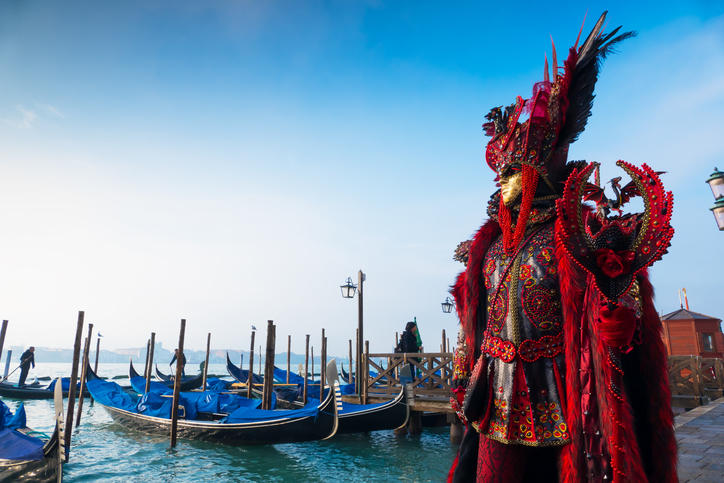
Maybe you’ve got tickets to Coachella, or perhaps you’re planning to see the Monaco Grand Prix, or you’ve booked a Ducati Dream Weekend. You might be off to Comic Con San Diego or you’ve won the jackpot and managed to get in to see Hamilton on Broadway. Trips built around events can be incredible once-in-a-lifetime experiences. They also come with their own special considerations to make sure those experiences are every bit as incredible as you hoped.
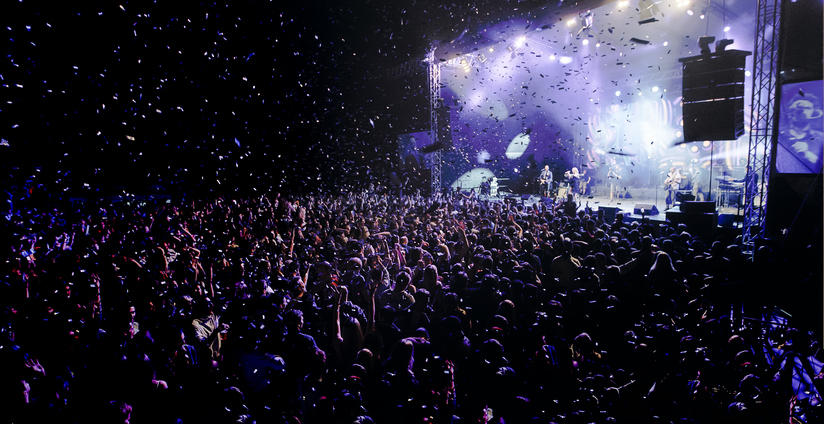
Splurge on a good ticket
If an event is the centrepiece of your trip, think carefully about the kinds of tickets you want to purchase. The chances are it’ll be a small proportion of your overall holiday expenses, and it would be so disappointing to travel over oceans and spend thousands of dollars to wind up in nosebleed seats. If you can afford it, spend the extra money to make sure you have the best seats you can get for the event.

Pack smart
Think carefully about all the possibilities for your trip: maybe the summer rain will hit early, or maybe there’ll be a special event you’ll want to go to that requires cocktail attire. Brainstorm possibilities before you go and try to pack items that can double up. Don’t forget gumboots if you’re likely to be walking through muddy fields, and comfortable shoes if you’ll be waiting in long lines. Water bottles, rain ponchos and snacks can all be really overpriced when you get to an event venue, so if possible, purchase ahead of time and bring them with you.
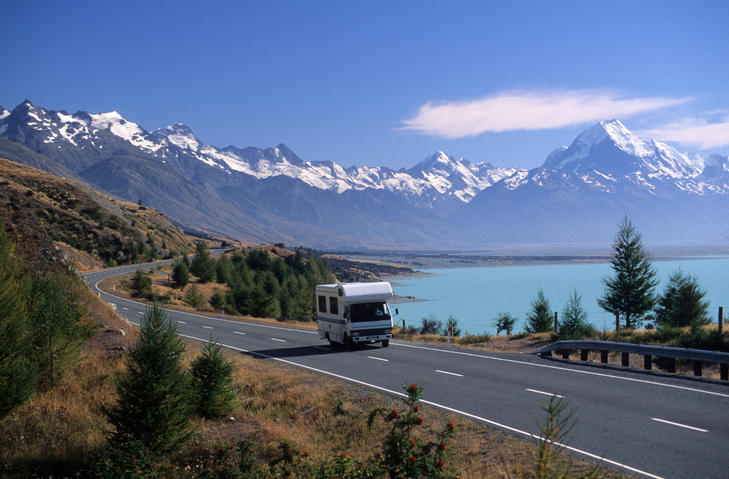
Consider renting a camper van
If you’re going to a festival or other event with camping, consider renting a van locally rather than packing camping gear for your trip. It will free up luggage space and be far less of a hassle. Plus, you won’t spend precious holiday time preparing your campsite and will mean you can stay warm and dry even in the rain. Make sure you have the right travel insurance, though: some policies don’t cover the excess for camper vans. Vans in local areas can book up very quickly ahead of big events, so book early!

Plan for jetlag
If you possibly can, arrive in the time zone of your special event with enough time to adjust well before it kicks off. The last thing you want is to be fading fast just as the headline act comes on, or to nod off before the encore. Time to acclimatise will help you be bright-eyed for your holiday highlight, so take that into account when you’re scheduling your trip.
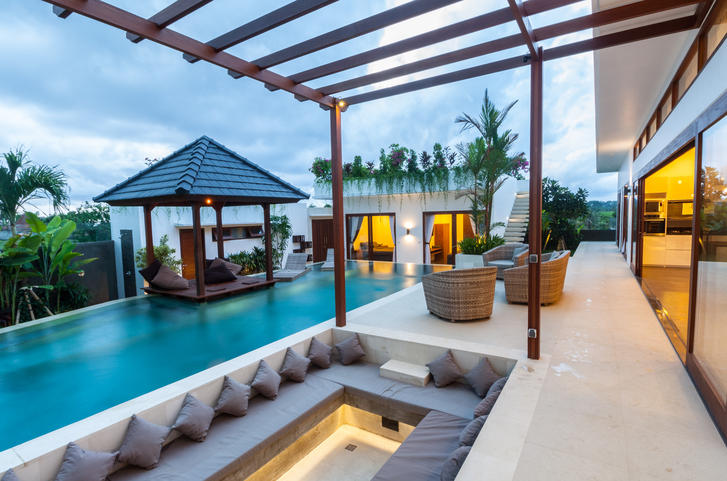
Rest the day before
It’s tempting to try to make the most out of every single day of your trip, but sometimes going hard every day means that you do more, but enjoy it less. Being well-rested and energetic for the capstone of your trip will make sure you’re more likely to get the most out of it. Consider staying somewhere restful and simple, close to the venue, the day before your event begins.
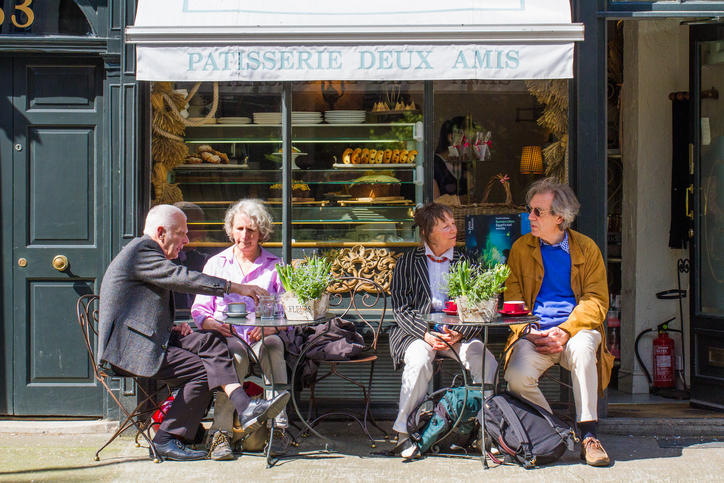
Make new friends
One of the best things about going to a special event is meeting people who share your passions. Consider checking out event pages on Facebook, or hashtags on Twitter, to find fellow travellers who will be good company at the event. But if you’re travelling alone, make sure you tell someone where you’re going to be and meet up with any new friends in a public place.
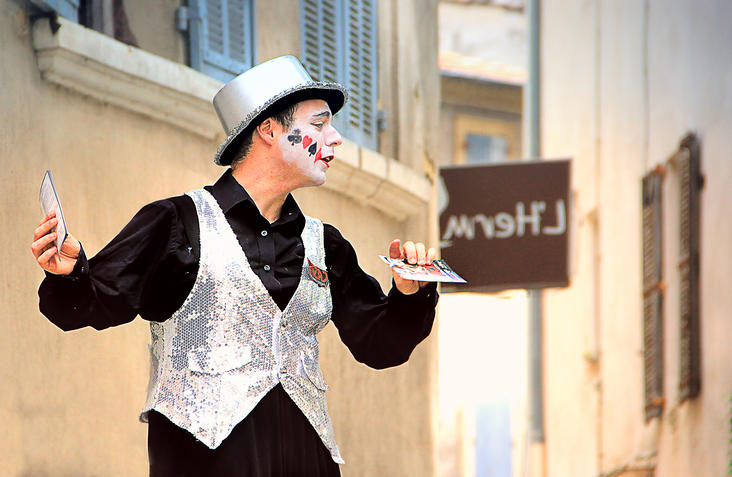
Budget for extras
The t-shirt, the souvenir program, the one-in-a-lifetime backstage photo: you never know what you might want to come home with to remember your incredible experience. Don’t forget to budget for these extras when you’re planning your trip: it’s not like you can go back later and buy another. Concert t-shirts from shows I’ve been to around the world are some of my favourite pieces of clothing.
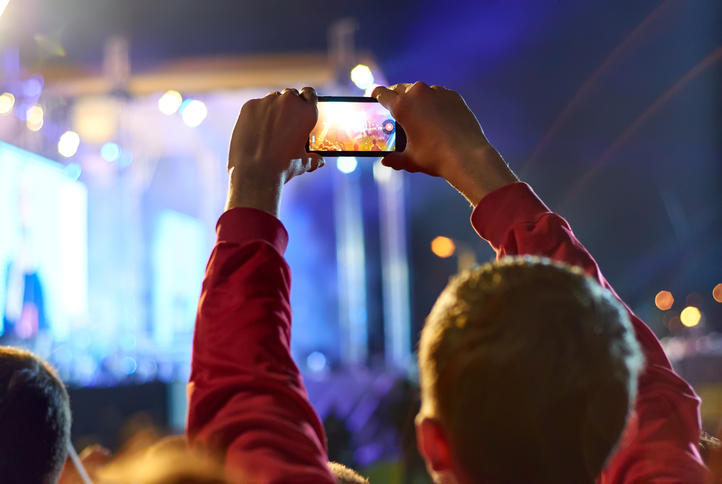
Be strategic with photos
It’s tempting to take a thousand photos of the event to show exactly how close you were but resist the temptation to spend most of the time taking pictures. You didn’t travel all that way to watch the show from behind a screen! Take a few photos that show where you were, and take plenty of you and your travel companions, but nobody needs to see seventeen shaky YouTube videos of your favourite songs. Live in the moment and trust that the pros will get it on camera.
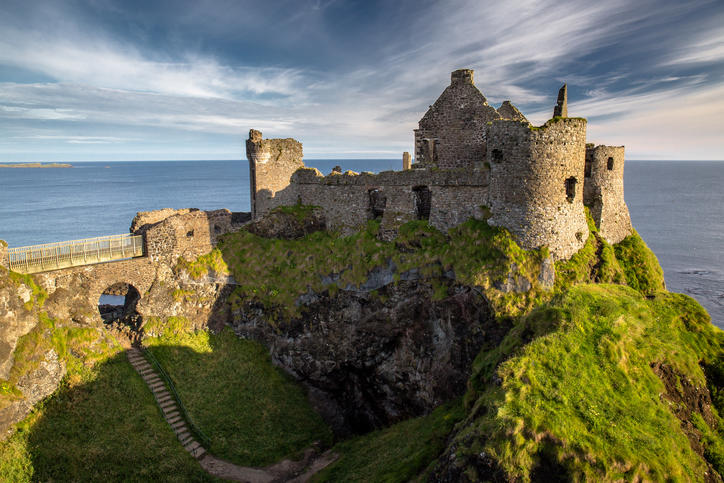
Make sure you’ve got the right travel insurance
Before you go, make sure you have the right international travel insurance lined up, so that if anything happens during your once-in-a-lifetime adventure, you’re prepared. Check your policy carefully before you purchase it to make sure it covers everything you need.
5 Ways Clothing can Make or Break your Trip
October 18, 2017
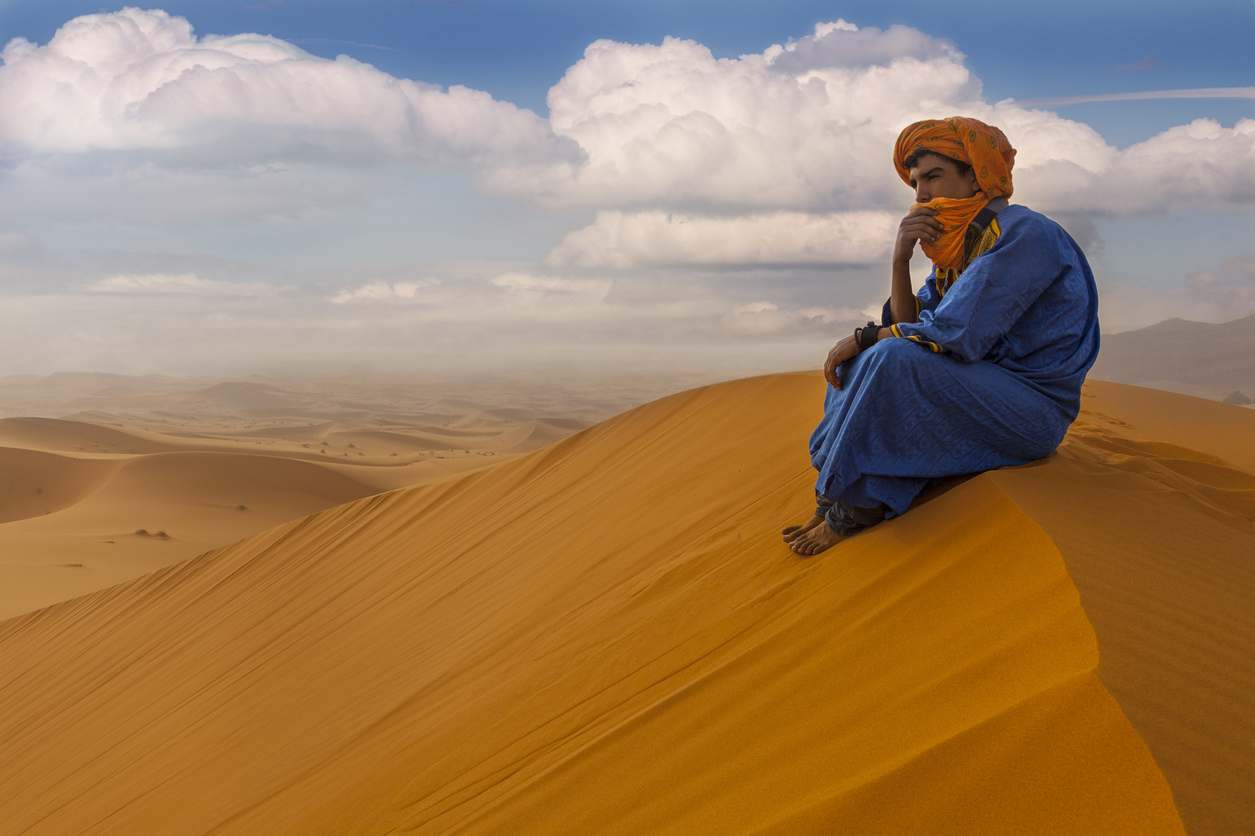
When we travel, we leave behind the comforts of home and most of our belongings. However, the one thing we do take with us is our clothing.
As part of the deal, your closet and drawers will be restricted to a suitcase, you usually (not always) lose access to a washer/dryer, you may face elements you’re not used to, and your usual attire may not be acceptable to local customs.
So researching and planning your travel wardrobe is essential to be prepared for your chosen destination and activities. The following are 5 ways clothing can make or break your trip.

Packing the Right Amount of Clothing
Choosing the right amount of clothes for your trip is probably the most important aspect of packing. Clothing takes up most of the room in our luggage, and with airlines becoming stricter on weight allowances and/or charging higher baggage fees it’s vital that you choose your travel wardrobe wisely (and perhaps get creative when packing it!).
Pack too much clothing and you face the struggle of lugging around a heavy suitcase. Pack too little and you may have to track down a Laundromat or pay hotel laundry service fees that could possibly cost you more money than your clothes are worth.
The key is choosing versatile clothes that can be used for more than one situation or occasion. Don’t skimp on your undergarments as they will of course take the brunt of your daily activities. Hold back on bringing numerous heavy and bulky items such as jumpers and jeans. These can get several days of use without a wash. The bulky items you do choose, try to keep out of your suitcase by wearing them on the plane. Besides saving room in your luggage, it may come in handy to have warm clothes with you onboard where it can often be chilly once airborne.

Choose Comfortable Low Maintenance Clothing
Travel can be stressful enough without having to be uncomfortable in your clothing. Just as comfort food eases our worries, so too does being draped in our favourite garments. You definitely should avoid tight clothing that can restrict motion as many modes of transport can have you placed in some awkward positions at times.
Bringing clothing that is easy to maintain is essential as you often don’t know what travel will have in store for you. The last thing you want to be doing on your holidays is ironing the day away or looking for the dry cleaners. Your expensive dress or suit may look great in Instagram photos but you’ll have to decide if “likes” are worth the hassle.

Dress for the Season and the Weather
Make sure to check the weather forecasts for where you’re headed so you know what kind of conditions you can expect. International travel involves taking the time to research what the conditions are like for the season you have chosen.
It goes without saying that if you’re headed for the snow, you will need extra accessories to keep your extremities warm. Winterizing your suitcase wardrobe takes a bit more planning but can be done quite easily. The key is not to have a bunch of bulky sweaters but rather to dress in layers. Layering lightweight long-sleeve shirts will be just as effective as something heavy and will be easier to pack.
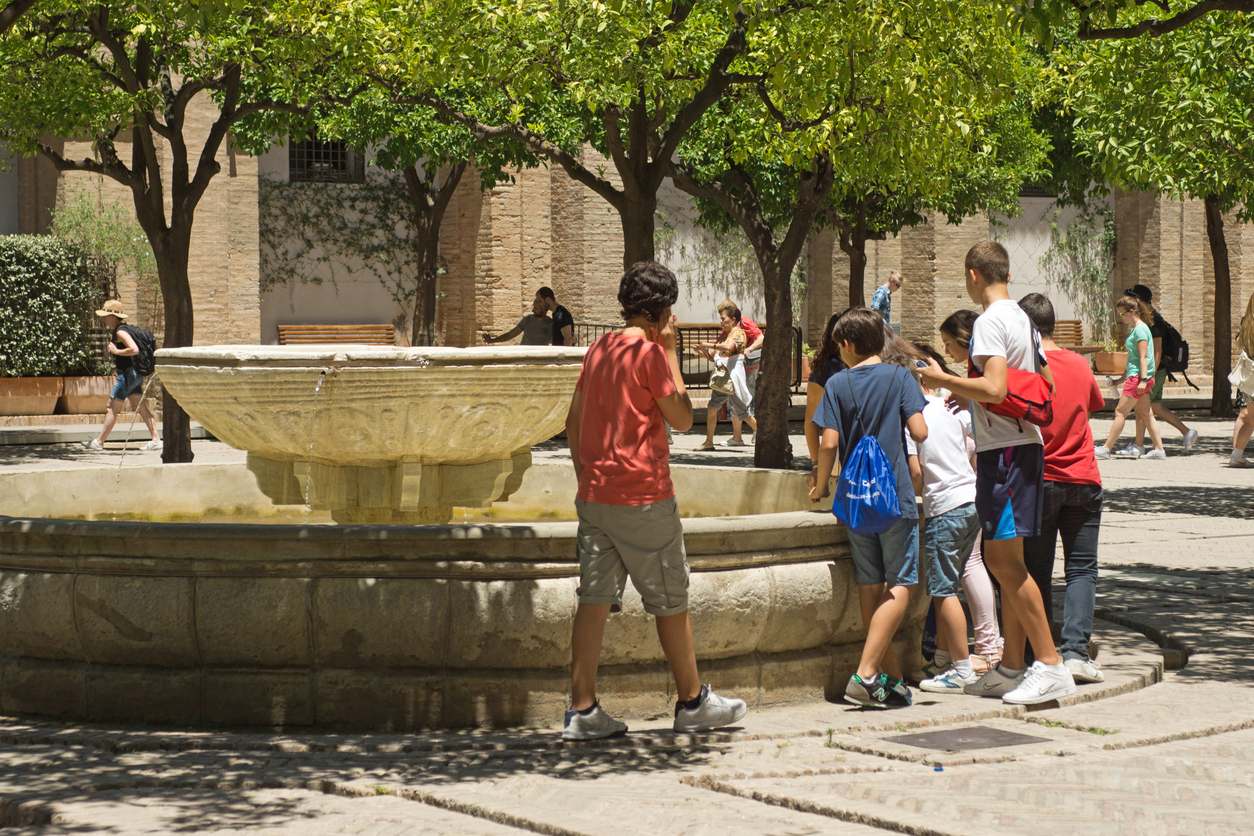
Pack the Right Shoes
Start on the right foot by making sure you have packed appropriate footwear for your itinerary. There’s nothing worse than not having the right treads as your feet take the brunt of your travels. You don’t want to be stuck with only sneakers if you’re headed to the beach, and you don’t want to be stuck with a suitcase full of thongs when a fancy night on the town is expected.
If you plan on heading on nature walks, it is vital to have heavy-duty waterproof hiking boots that will not only keep your feet safe from the elements but also from unexpected wildlife such as snakes. Try to wear your heaviest footwear on the plane to lighten your baggage load. You can always remove them in flight and switch to a pair of hotel slippers or comfortable socks.
Be sure to bring plastic bags for your shoes so you can pack them in your suitcase without getting dirt or sand throughout your clothes. Also, make sure to break in any new pairs of shoes before your trip to avoid blisters during your travels.

Choose Clothing that is Culturally Appropriate
Even more important than choosing your clothing based on your destination’s weather and your comfort is to make sure your look will be respectful to local customs. Foreign countries may not have the relaxed laws you may be used to when it comes to public dress.
International travel is not the time to make a stand for your personal freedom of style. You may not agree with laws such as women having to cover up or not being allowed to expose tattoos but these are minor inconveniences for being allowed to experience another land and its culture.
Travel is a time to open your own mind to new ideas, not a time to act as a missionary trying to change a destination. It is a destination’s uniqueness that draws us to travel in the first place.
Regardless of what clothing you ultimately choose to bring, make sure you consider travel insurance. This will cover you in the event your baggage is lost, stolen, or damaged. It will also come in handy should your bags be greatly delayed by an airline or transport company and you are forced to purchase new clothing to get you by.
Ultimate Guide to Saving Money on Your Disney Holiday
November 15, 2017

A visit to Disney World or Disneyland is a dream come true for many children and adults alike. It makes for a truly magical experience, and one which everyone will remember for the rest of their life.
However, that magic often comes at a hefty price. In addition to high park entrance fees, you have accommodation and transportation expenses to worry about.
Thankfully, there are many ways in which you can save on a Disney vacation, which may allow families on a strict budget to afford such a luxury, or allow travellers to extend their Disney experience. Here are some helpful tips on how you can save some cash on your next Disney holiday.

Travel During Low Season
Booking your Disney holiday during off-peak season not only allows you to avoid massive crowds but also saves you a lot of money. Although you won’t save on park passes, you will save on accommodation and maybe even flights.
Low season for parks in the US includes mid-January through mid-March, mid-April through mid-May, and mid-September through mid-November. These periods of time traditionally see lower attendance; however, watch out for the odd holiday, like Halloween, which sees crowds peak.

Stay Offsite
If you plan on renting a car, this will allow you to drive to the parks yourself, meaning you can stay at a hotel outside of the Disney Resort area.
This is far more economical, as Disney Resorts are often a lot more expensive than those in cities like Orlando or Anaheim, and you may find hotels with much larger rooms and less restrictive terms when it comes to guests allowed.
Some hotels may even be close enough to the parks to walk.
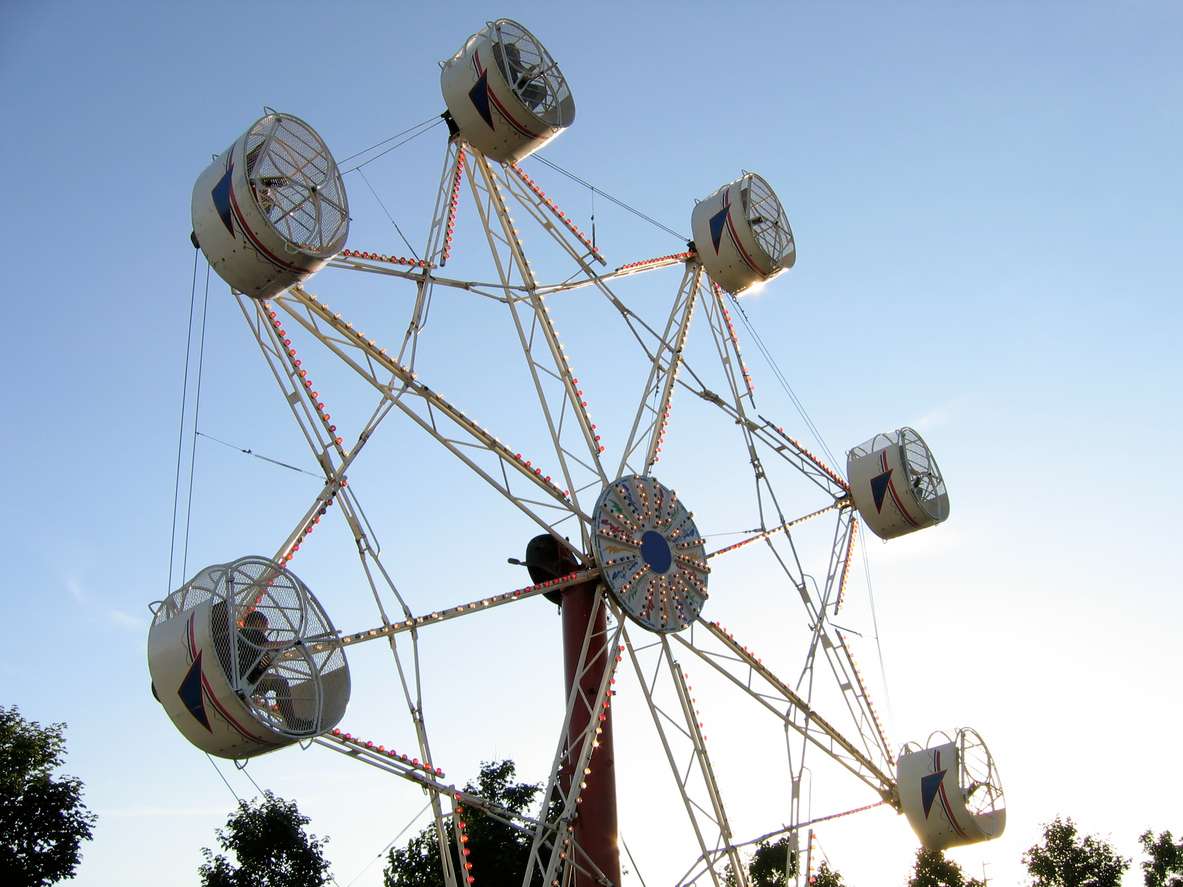
Check Disney Websites for Special Offers
Disney used to be very hushed when it came to publicising discounts, but this has somewhat changed. You can now find special offers listed on their websites and delivered to your inbox if you sign up for their mailing list, although they can still be tricky to find, so a bit of searching around may be required.
You’ll find seasonal discounts, multi-day/night room and ticket options, and percentage off specials. Note that specials are usually not offered during peak season and usually require a minimum number of days/nights, which may be more than you were willing to spend.
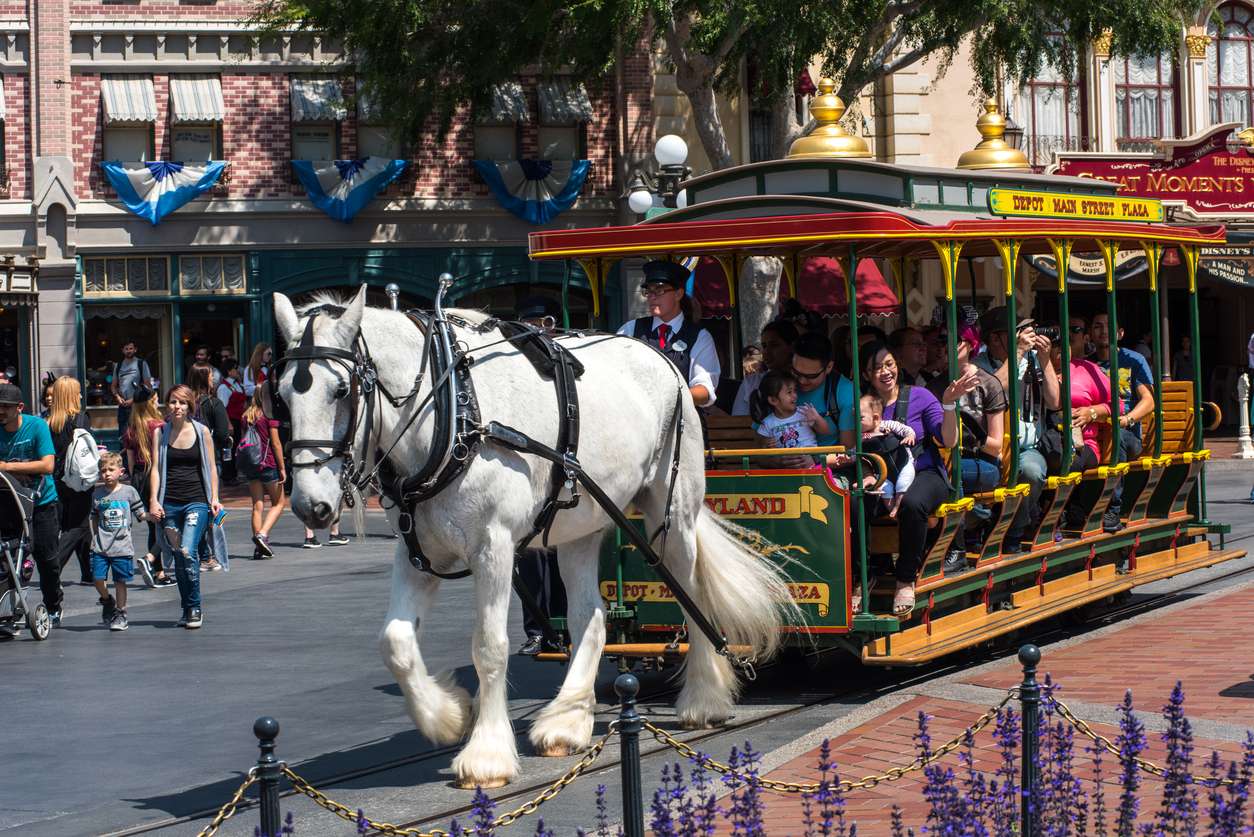
Ditch the Rental Car
While renting a car means you could save money on accommodation by staying off-site, compare the cost of a rental car against the free transport offered by staying at a Disney Resort.
Disney World offers much more in the way of complimentary transportation services than Disneyland. If you find yourself staying at a qualifying Walt Disney World Resort Hotel, then you can take advantage of Disney’s Magical Express, which will shuttle you to and from Orlando International Airport. This includes free luggage delivery as well as complimentary check-in services for partner airlines.
Guests of select Walt Disney World Resort hotels will enjoy complimentary transportation throughout Walt Disney World Resort, including transportation to and from Disney Theme Parks and Disney Water Parks.
Avoid the driving and parking hassles by making use of the complimentary Walt Disney World Resort transportation system. Air-conditioned buses, the Monorail, and boat rides are all offered to shuttle you around the resorts and parks.
Disneyland offers the Disneyland Resort Express, which can be taken from LAX airport just as you exit baggage claim, and the Anaheim Resort Transit Trolley will shuttle you around Disneyland itself and the surroundings. Both of these cost a fee but may be cheaper and less hassle than renting a car if you plan on just staying around the park for an extended time. Note that children under 11 are usually free to use the ART services with a paid adult.

Pay with Credit Cards
Using credit cards is a great idea if you’re responsible with using them and pay them off in full each month. You can offset Disney purchases with the points or rewards you will attain, which many credit cards offer.
Make sure to use cards with no foreign transaction fees when travelling internationally, and know that your credit card company usually offers better foreign exchange rates than swapping currency at the airport.
You may even be able to cash in already accumulated points to reduce the costs of your next Disney vacation.

Under 3 is Free!
Two-year-olds generally have it made, especially when visiting Disneyland or Disney World, as they get in free. In addition to free admission to the parks, they are not required to obtain Fastpasses, nor do they have to be included on a dining plan. They can simply share off your plate.
You will usually not be required to provide any proof of age for children under the age of 3, but you could bring along a birth certificate if you are worried. Should your child turn 3 during your Disney holiday, rest assured they will still be free so long as they were two on the first day you visited the parks.

Avoid Purchasing Souvenirs from the Resorts & Parks
Nearly all Disney toys and gifts available for purchase at Disneyland or Disney World itself will have you forking out a lot of your hard-earned cash. You can get creative and secretly purchase Disney merchandise beforehand via discount online sources or local low-priced department stores.
Try presenting your pre-purchased gifts to your children each day before you head out to the parks, which may hopefully eliminate the pressure from your children wanting to buy merchandise within the parks.

Check Up Mousesavers Online
Since 2001, MouseSavers have been providing Disney-related discounts, including deals on resort hotels, tickets, and vacation packages. You can sign up for their free newsletter, which sends discounts when they become available.
Remember to purchase comprehensive travel insurance before you take your trip – you don’t want to give the happiest place on earth a reason not to be!
